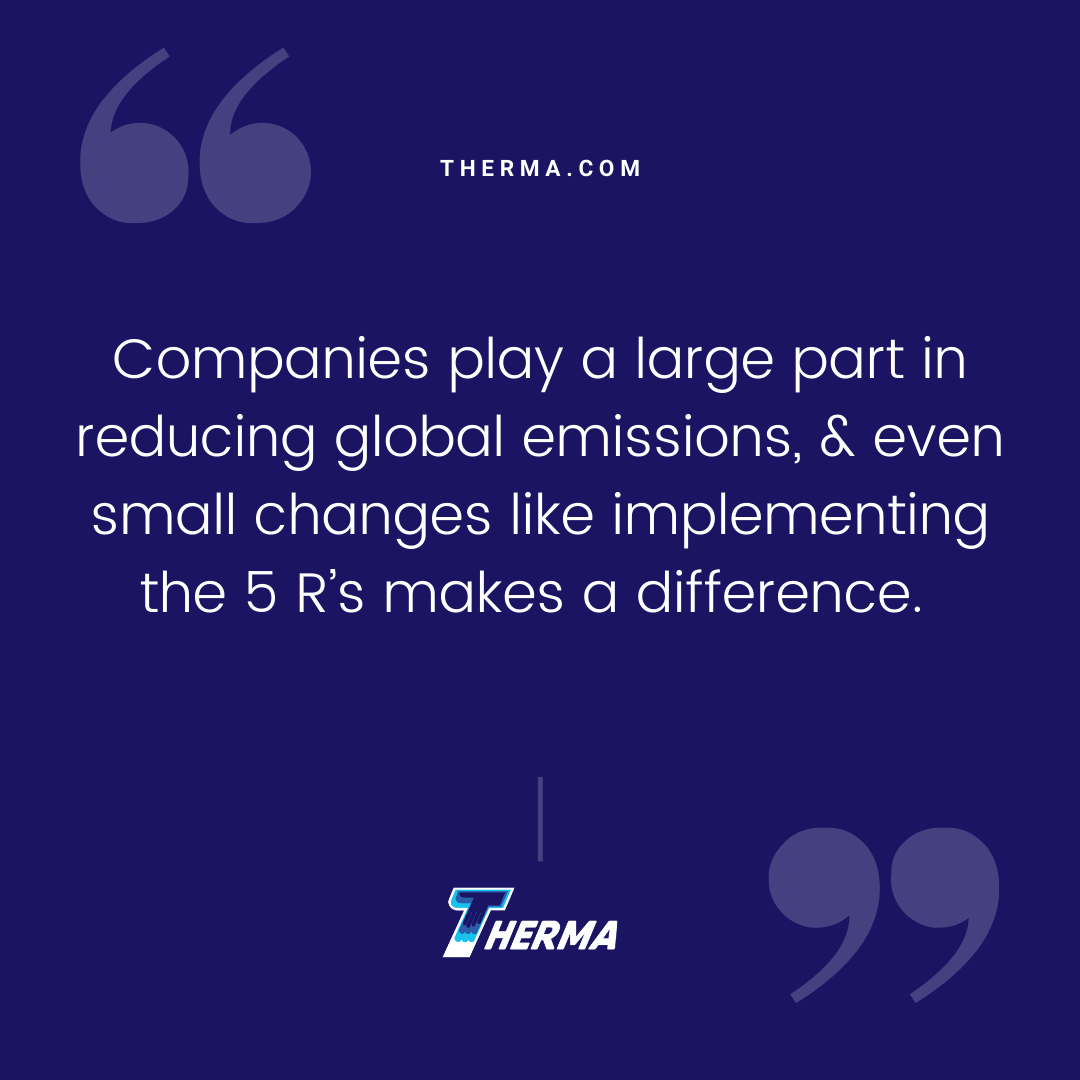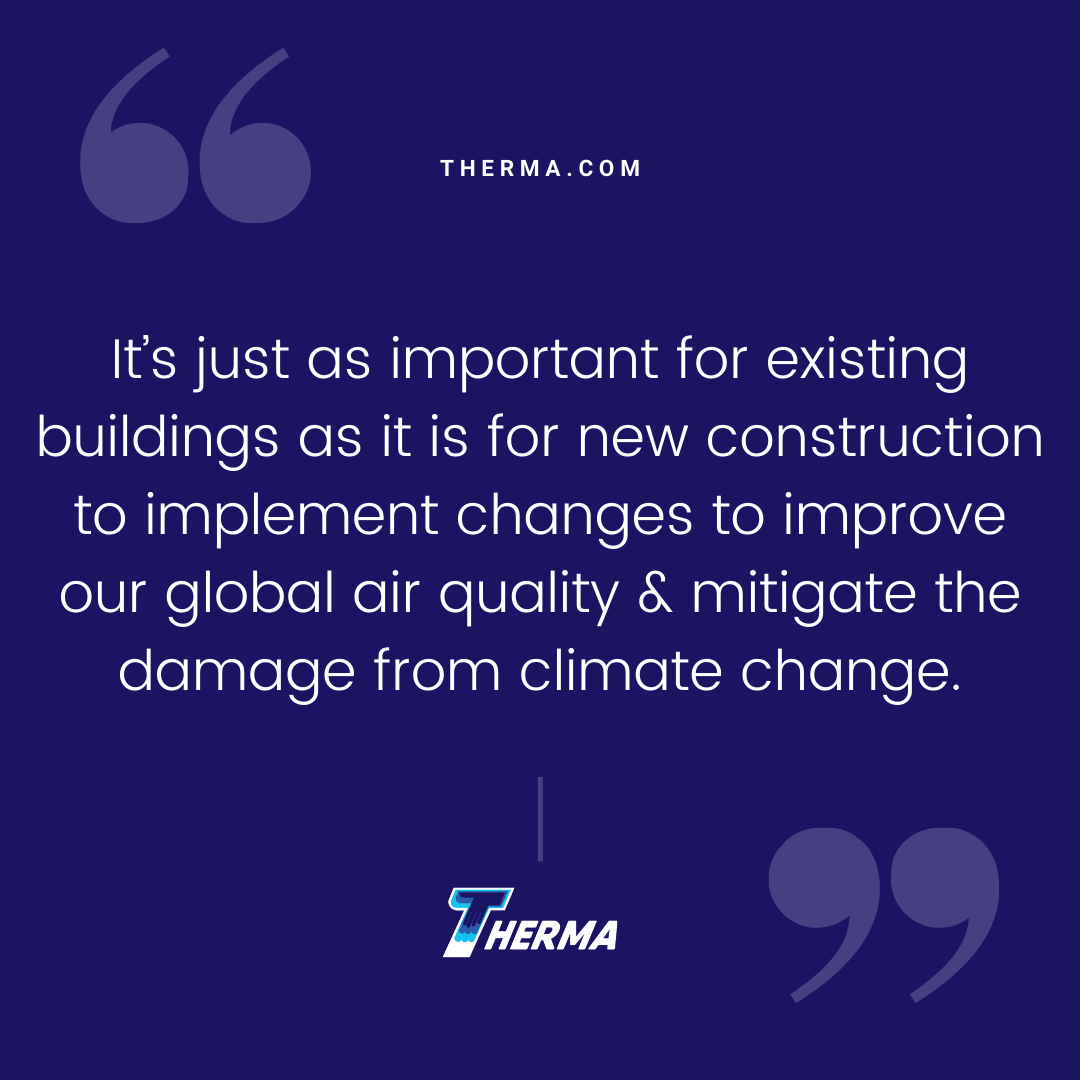by Amy Taylor
When we look at ways to reduce air pollution, many of us might think of using electric cars, riding a bike to work or using public transportation. And while those actions will help improve our air quality, it’s really commercial buildings that can make a huge difference in reducing CO2 emissions. A whopping 40% of annual CO2 emissions come from buildings. Out of that number, 11% comes from new construction and 28% from building operations.
How To Reduce Air Pollution
It’s just as important for existing buildings as it is for new construction to implement changes to improve our global air quality and mitigate the damage from climate change. Here are six ways facilities can help reduce air pollution and shrink their carbon footprint.

1. Use Efficient HVAC Units
HVAC systems are critical to building sustainability and health. Smart HVAC units are part of the Internet of Things that use automation and predictive analyses to forecast adjustments, making them more efficient energy consumers. Their energy efficiency leads to a smaller carbon footprint and less air pollution from buildings.
2. Invest in Renewable Energy
A building can reduce demand for conventional energy by generating its own via solar or wind energy. By installing solar technology on the walls and roof, a building could utilize solar air heating, water heating and electricity. Similarly, wind turbines can help your company reduce pollution and save money.
3. Implement the 5 R’s
The 5Rs, refuse, reduce, reuse, recycle and rot, can help buildings operate with green principles in mind.
Reduce
Reduce the number of new materials used in construction by purchasing recycled building materials.
Refuse
When constructing new buildings, you can refuse to use materials that are sourced internationally to reduce the number of fossil fuels needed to transport materials to the building site. You can also refuse paper documents used in your company in favor of digital solutions.
Reuse
You can reuse materials like glass, cardboard and other biodegradable materials.
Recycle
Recycle products and materials when possible. For example, most glass can be recycled, depending on the color. Other types of glass can be downcycled to use instead of pea gravel or stone.
Repurpose
Set up compost resources like compost bins to allow food consumed in your building to be repurposed and rot naturally for landscaping and gardens. By composting, you keep organic materials out of landfills and prevent them from contaminating other recyclable materials.
4. Reduce Electricity Usage
The EPA has a voluntary ENERGY STAR program that helps buildings save electricity. In 2018 they helped organizations and businesses save 190 billion kilowatt hours of energy. Buildings can participate in this program to save money on electricity and reduce greenhouse gasses created through using conventional electricity. On average, ENERGY STAR certified buildings consume up to 35% less energy, creating 35% fewer greenhouse gasses.

5. Use Recycled and Locally Sourced Materials
By choosing recycled building materials, your building will have less of a negative impact on the environment. Many suppliers offer green materials, like cinder blocks made from plastic bags and tiles made from wine corks. Steel is one of the most recycled materials, so having a metal building system that uses recycled steel can help reduce the building’s carbon footprint. There are many innovative construction materials now, like cinder blocks made from plastic bags and tiles made from wine corks.
In addition to using recycled building materials, it’s also important to have locally sourced building materials to reduce fossil fuel consumption of transporting products over long distances.
6. Get LEED Certified
LEED Certification is a rating system sponsored by the United States Green Building Council (USGBC) that tells how sustainable or green a building is. LEED-certified buildings help the planet by reducing waste, using less water, and improving air quality. These buildings also have fewer indoor pollutants like mold and mildew.
Therma, a consultant with many LEED Certified projects under its belt, can help you get certified today.
Commercial Sustainability with Therma
Companies play a large part in reducing global emissions, and even small changes like implementing the 5 R’s makes a difference. Whether you have an existing building you want to improve or you’re constructing a new building, the HVAC and energy experts at Therma can help. Contact us today to understand your best path forward for commercial sustainability!
Amy Taylor is a freelance writer, editor and artist from Fredericksburg, Virginia. To read more of her work, check out her portfolio.
Sources
Metal Architecture – 8 Tips to Reduce Your Building Carbon Footprint
Architecture 2030 – Why the Building Sector?
World Green Building Council – Air Quality in the Built Environment
Metropolis – When a Building Comes Down, Where Do Its Materials Go?
All About Waste – Why Commercial Buildings Should Prioritize Composting
Energy Star – About Us







